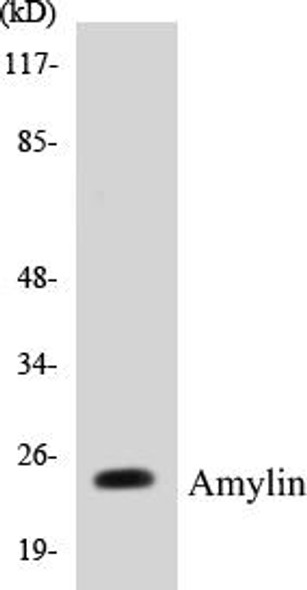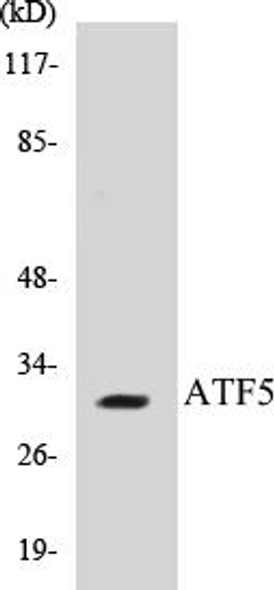Description
EPHA7 Colorimetric Cell-Based ELISA Kit
The Human EPHA7 Colorimetric Cell-based ELISA Kit is specifically designed for the accurate detection of EPHA7 protein levels in cell lysates and tissue homogenates. This kit offers high sensitivity and specificity, providing reliable and reproducible results for a variety of research applications.EPHA7 is a critical protein that belongs to the ephrin receptor tyrosine kinase family and is involved in various cellular processes such as cell growth, migration, and differentiation. Dysregulation of EPHA7 has been linked to cancer progression, neurodevelopmental disorders, and neurodegenerative diseases, making it a valuable biomarker for understanding these conditions and potentially developing targeted therapies.
By using the EPHA7 Colorimetric Cell-based ELISA Kit, researchers can accurately measure EPHA7 protein levels in their samples, enabling them to further investigate its role in disease pathogenesis and explore potential therapeutic interventions. This kit is easy to use, with minimal sample preparation required, making it suitable for a wide range of experimental settings.
| Product Name: | EPHA7 Colorimetric Cell-Based ELISA Kit |
| Product Code: | CBCAB00640 |
| ELISA Type: | Cell-Based |
| Target: | EPHA7 |
| Reactivity: | Human, Mouse, Rat |
| Dynamic Range: | > 5000 Cells |
| Detection Method: | Colorimetric 450 nmStorage/Stability:4°C/6 Months |
| Format: | 96-Well Microplate |
The EPHA7 Colorimetric Cell-Based ELISA Kit is a convenient, lysate-free, high throughput and sensitive assay kit that can detect EPHA7 protein expression profile in cells. The kit can be used for measuring the relative amounts of EPHA7 in cultured cells as well as screening for the effects that various treatments, inhibitors (ie siRNA or chemicals), or activators have on EPHA7.
Qualitative determination of EPHA7 concentration is achieved by an indirect ELISA format. In essence, EPHA7 is captured by EPHA7-specific primary antibodies while the HRP-conjugated secondary antibodies bind the Fc region of the primary antibody. Through this binding, the HRP enzyme conjugated to the secondary antibody can catalyze a colorimetric reaction upon substrate addition. Due to the qualitative nature of the Cell-Based ELISA, multiple normalization methods are needed:
| 1. | A monoclonal antibody specific for human GAPDH is included to serve as an internal positive control in normalizing the target absorbance values. |
| 2. | Following the colorimetric measurement of HRP activity via substrate addition, the Crystal Violet whole-cell staining method may be used to determine cell density. After staining, the results can be analysed by normalizing the absorbance values to cell amounts, by which the plating difference can be adjusted. |
| Database Information: | Gene ID: 2045, UniProt ID: Q15375, OMIM: 602190, Unigene: Hs.73962 |
| Gene Symbol: | EPHA7 |
| Sub Type: | None |
| UniProt Protein Function: | EphA7: a widely-expressed receptor tyrosine kinase of the Eph family. Receptor for members of the ephrin-A family. Binds to ephrin-A1, -A2, -A3, -A4 and -A5. Contains 1 sterile alpha motif (SAM) and two fibronectin type III domains. |
| UniProt Protein Details: | Protein type:Kinase, protein; EC 2.7.10.1; Protein kinase, TK; Membrane protein, integral; Protein kinase, tyrosine (receptor); TK group; Eph family Chromosomal Location of Human Ortholog: 6q16.1 Cellular Component: plasma membrane Molecular Function:axon guidance receptor activity; chemorepellent activity; GPI-linked ephrin receptor activity; protein binding; protein-tyrosine kinase activity Biological Process: brain development; branching morphogenesis of a nerve; ephrin receptor signaling pathway; negative chemotaxis; phosphorylation; positive regulation of neuron apoptosis; regulation of caspase activity; regulation of cell-cell adhesion; regulation of peptidyl-tyrosine phosphorylation; regulation of protein amino acid autophosphorylation |
| NCBI Summary: | This gene belongs to the ephrin receptor subfamily of the protein-tyrosine kinase family. EPH and EPH-related receptors have been implicated in mediating developmental events, particularly in the nervous system. Receptors in the EPH subfamily typically have a single kinase domain and an extracellular region containing a Cys-rich domain and 2 fibronectin type III repeats. The ephrin receptors are divided into 2 groups based on the similarity of their extracellular domain sequences and their affinities for binding ephrin-A and ephrin-B ligands. Increased expression of this gene is associated with multiple forms of carcinoma. Alternative splicing results in multiple transcript variants. [provided by RefSeq, Dec 2013] |
| UniProt Code: | Q15375 |
| NCBI GenInfo Identifier: | 146345416 |
| NCBI Gene ID: | 2045 |
| NCBI Accession: | Q15375.3 |
| UniProt Secondary Accession: | Q15375,Q59G40, Q5VTU0, Q8N368, Q9H124, A0AUX7, B2R8W1 B7ZLJ9, B7ZLK0, |
| UniProt Related Accession: | Q15375 |
| Molecular Weight: | 50,521 Da |
| NCBI Full Name: | Ephrin type-A receptor 7 |
| NCBI Synonym Full Names: | EPH receptor A7 |
| NCBI Official Symbol: | EPHA7 |
| NCBI Official Synonym Symbols: | EHK3; EK11; EHK-3; HEK11 |
| NCBI Protein Information: | ephrin type-A receptor 7 |
| UniProt Protein Name: | Ephrin type-A receptor 7 |
| UniProt Synonym Protein Names: | EPH homology kinase 3; EHK-3; EPH-like kinase 11; EK11; hEK11 |
| Protein Family: | Ephrin type-A receptor |
| UniProt Gene Name: | EPHA7 |
| UniProt Entry Name: | EPHA7_HUMAN |
| Component | Quantity |
| 96-Well Cell Culture Clear-Bottom Microplate | 2 plates |
| 10X TBS | 24 mL |
| Quenching Buffer | 24 mL |
| Blocking Buffer | 50 mL |
| 15X Wash Buffer | 50 mL |
| Primary Antibody Diluent | 12 mL |
| 100x Anti-Phospho Target Antibody | 60 µL |
| 100x Anti-Target Antibody | 60 µL |
| Anti-GAPDH Antibody | 60 µL |
| HRP-Conjugated Anti-Rabbit IgG Antibody | 12 mL |
| HRP-Conjugated Anti-Mouse IgG Antibody | 12 mL |
| SDS Solution | 12 mL |
| Stop Solution | 24 mL |
| Ready-to-Use Substrate | 12 mL |
| Crystal Violet Solution | 12 mL |
| Adhesive Plate Seals | 2 seals |
The following materials and/or equipment are NOT provided in this kit but are necessary to successfully conduct the experiment:
- Microplate reader able to measure absorbance at 450 nm and/or 595 nm for Crystal Violet Cell Staining (Optional)
- Micropipettes with capability of measuring volumes ranging from 1 µL to 1 ml
- 37% formaldehyde (Sigma Cat# F-8775) or formaldehyde from other sources
- Squirt bottle, manifold dispenser, multichannel pipette reservoir or automated microplate washer
- Graph paper or computer software capable of generating or displaying logarithmic functions
- Absorbent papers or vacuum aspirator
- Test tubes or microfuge tubes capable of storing ≥1 ml
- Poly-L-Lysine (Sigma Cat# P4832 for suspension cells)
- Orbital shaker (optional)
- Deionized or sterile water
*Note: Protocols are specific to each batch/lot. For the correct instructions please follow the protocol included in your kit.
| Step | Procedure |
| 1. | Seed 200 µL of 20,000 adherent cells in culture medium in each well of a 96-well plate. The plates included in the kit are sterile and treated for cell culture. For suspension cells and loosely attached cells, coat the plates with 100 µL of 10 µg/ml Poly-L-Lysine (not included) to each well of a 96-well plate for 30 minutes at 37°C prior to adding cells. |
| 2. | Incubate the cells for overnight at 37°C, 5% CO2. |
| 3. | Treat the cells as desired. |
| 4. | Remove the cell culture medium and rinse with 200 µL of 1x TBS, twice. |
| 5. | Fix the cells by incubating with 100 µL of Fixing Solution for 20 minutes at room temperature. The 4% formaldehyde is used for adherent cells and 8% formaldehyde is used for suspension cells and loosely attached cells. |
| 6. | Remove the Fixing Solution and wash the plate 3 times with 200 µL 1x Wash Buffer for five minutes each time with gentle shaking on the orbital shaker. The plate can be stored at 4°C for a week. |
| 7. | Add 100 µL of Quenching Buffer and incubate for 20 minutes at room temperature. |
| 8. | Wash the plate 3 times with 1x Wash Buffer for 5 minutes each time. |
| 9. | Add 200 µL of Blocking Buffer and incubate for 1 hour at room temperature. |
| 10. | Wash 3 times with 200 µL of 1x Wash Buffer for 5 minutes each time. |
| 11. | Add 50 µL of 1x primary antibodies (Anti-EPHA7 Antibody and/or Anti-GAPDH Antibody) to the corresponding wells, cover with Parafilm and incubate for 16 hours (overnight) at 4°C. If the target expression is known to be high, incubate for 2 hours at room temperature. |
| 12. | Wash 3 times with 200 µL of 1x Wash Buffer for 5 minutes each time. |
| 13. | Add 50 µL of 1x secondary antibodies (HRP-Conjugated AntiRabbit IgG Antibody or HRP-Conjugated Anti-Mouse IgG Antibody) to corresponding wells and incubate for 1.5 hours at room temperature. |
| 14. | Wash 3 times with 200 µL of 1x Wash Buffer for 5 minutes each time. |
| 15. | Add 50 µL of Ready-to-Use Substrate to each well and incubate for 30 minutes at room temperature in the dark. |
| 16. | Add 50 µL of Stop Solution to each well and read OD at 450 nm immediately using the microplate reader. |
(Additional Crystal Violet staining may be performed if desired – details of this may be found in the kit technical manual.)






